When winter hits New England, your fireplace should make your home warm—not waste energy. At GMT Home Services, we specialize in chimney insulation, chimney liner insulation, and complete chimney liner installation. From wood stoves to fireplace inserts, our certified experts know how to insulate properly, reduce creosote buildup, and protect your home from chimney fires.
Every masonry chimney carries flue gases at high temperatures. Without proper insulation, those gases cool too quickly, creating condensation and creosote. Over time, this increases the risk of fire and structural damage. Installing liner insulation—such as an insulation blanket kit or ready mix insulation—keeps your stainless steel chimney liner or brick chimney performing safely and efficiently.
The advantages of insulation go beyond safety:
If you own a wood-burning stove or a gas appliance, insulating your liner is strongly advised for both safety and performance.
“Protect your home from moisture, condensation, and chimney damage this season. Book your chimney liner insulation service in CT now.”

Your outer wall, liner, and chimney flue all need to manage temperatures safely. That’s why manufacturers design insulation kits that fit around the liner diameter while leaving enough room for safe expansion.
Every chimney and fireplace insert is different, which is why every reline job is customized to match your home’s needs.
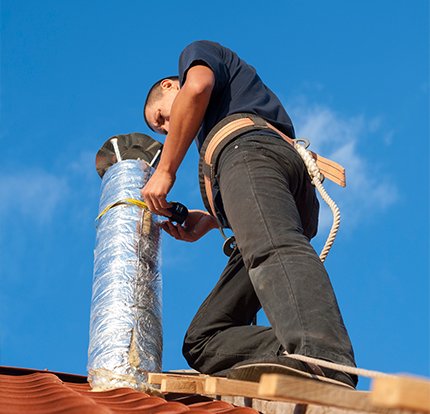
We’ve seen what happens when homeowners skip insulation—it’s never good. Without a stainless steel liner insulation kit or proper fireplace insulation, you risk:
Chimney Fires – Cool gases cause creosote buildup, which ignites under the wrong conditions.
Poor Draft – Weak airflow leads to smoky rooms and inefficient burning.
Condensation – Moisture corrodes stainless steel liners and damages brick masonry.
Heat Loss – Wasted heat means higher bills and less comfort.
Cracks & Damage – Expanding and contracting temperatures damage masonry seams.
A poorly insulated system doesn’t just cost money—it threatens your home’s safety.
“Don’t let Connecticut winters drive up your heating bills. Schedule chimney insulation today and keep the warmth inside where it belongs.”
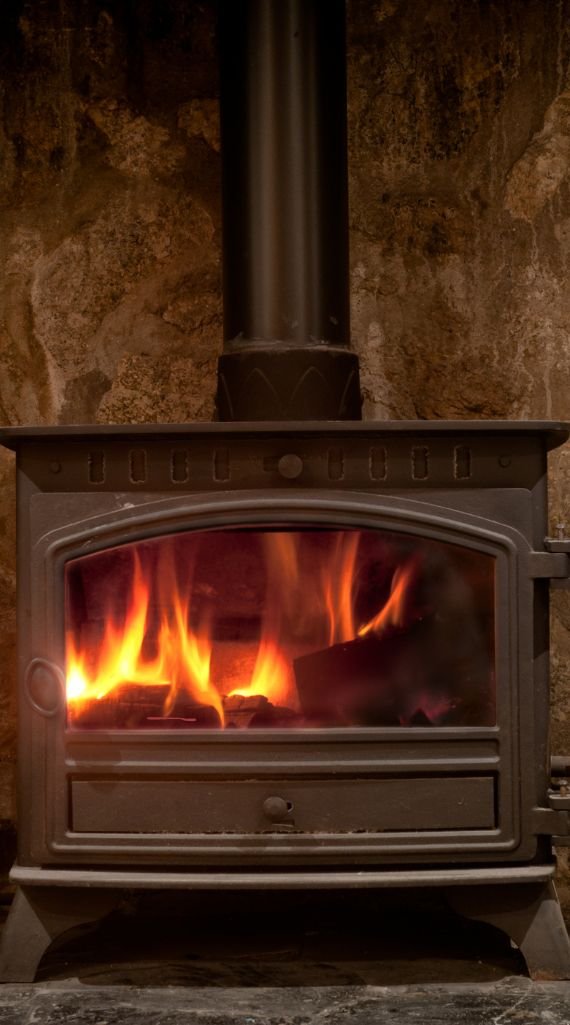
Different chimneys and appliances call for different insulation solutions. We stock and install:
Insulation Blanket Kits – The most common choice for stainless steel chimney liners. They come in thick rolls with foil and mesh for easy wrapping.
Ready Mix Insulation – Poured around the liner to block air gaps and provide consistent coverage.
Vermiculite or Loose Fill – A cost-effective solution for masonry flues with enough space.
Rigid Insulation Panels – Durable, but increase the outside diameter, so they must be tested for clearance.
Each option is tested for performance and safety. Our team helps you choose the right insulation to match manufacturers’ specifications and your heating system.
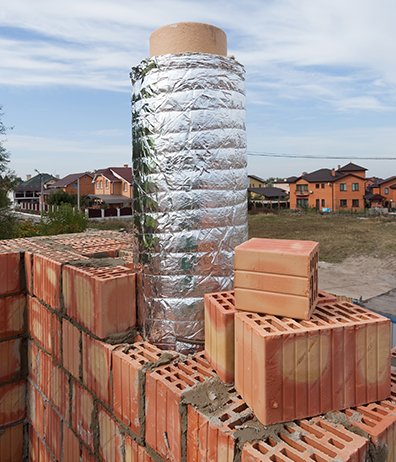
Most modern relining projects use stainless steel chimney liners because they are durable, efficient, and easy to pair with insulation. Adding an insulation mix around the liner dramatically improves draft performance and reduces the risk of fire.
Benefits of an insulated stainless steel chimney liner:
“From Hartford to New Haven, CT homeowners trust us for safer, more efficient chimneys. Call today to insulate your chimney and stay ahead of the weather.”
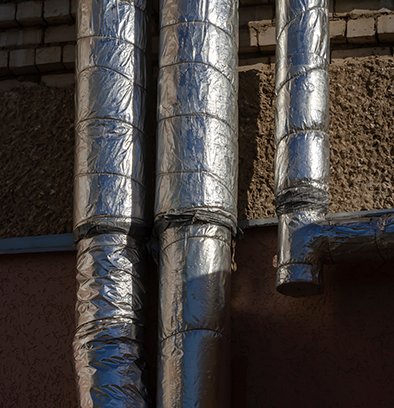
We’ve completed hundreds of chimney insulation installations across Connecticut—from historic brick homes with oversized flues to modern houses with zero clearance fireplaces. Our hands-on experience means we know how to:
Secure insulation kits properly for lasting protection.
Accommodate appliances of all ranges—wood, gas, or oil.
Ensure safe clearance even in tight damper areas.
Improve efficiency while protecting your home from fire risks.
When it comes to insulation, there’s no one-size-fits-all solution. That’s why we always recommend professional installation—it’s not just about performance, it’s about protecting your family and your home.
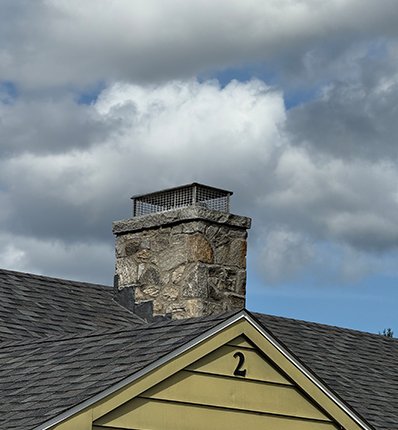
Whether you’re searching for chimney insulation or need a full reline job, GMT Home Services is your trusted partner for safe, efficient chimney care. Let’s make your fireplace, stove, or insert safer, more efficient, and ready for winter.
Fireproof chimney insulation, such as an insulation blanket or pre-insulated chimney liner, is strongly advised. It helps reduce heat loss, prevent condensation, and lower the risk of chimney fires.
A chimney relining job typically costs \$2,500–\$5,000, depending on the liner material, diameter, and installation complexity. Stainless steel insulated liners are on the higher end but last longer.
The 3-2-10 rule means your chimney must be 3 feet above the roof where it exits and 2 feet higher than any part of the roof within 10 feet. This ensures proper draft and safety.
Most homeowners use an insulation blanket kit or pour-in insulation around the liner. A professional install is recommended to ensure the insulation fits the chimney flue and outer wall correctly.
Yes—insulating a chimney liner improves efficiency, reduces creosote buildup, and prevents dangerous heat transfer to masonry or surrounding structures.
A quality stainless steel chimney liner can last 20–25 years when installed and maintained properly. Masonry liners may deteriorate faster without insulation.
DIY installation is possible with insulation kits, but professional installation is strongly advised to meet code requirements, handle high temperatures, and reduce fire risks.
Yes. Insulation increases performance, protects against condensation, and is essential for wood stove, fireplace insert, and gas appliance connections.
The main disadvantages are cost and space requirements. A liner reduces the flue’s inside diameter, which can be an issue if there isn’t enough room in older chimneys.
Installing a stainless steel insulated chimney liner usually costs \$3,000–\$6,000, depending on the size, outside diameter, and installation conditions.
EXCELLENTTrustindex verifies that the original source of the review is Google. I called GMT for emergency tarp service after a branch crashed onto my roof. They showed up same day, secured everything fast .They handled the full claim management with my insurance and literally saved me 15,000$ through their negotiation. The roof is completely done now and looks amazing. These guys are real pros total experts and actually care. So glad I found them!Posted onTrustindex verifies that the original source of the review is Google. Thanks to Joe and Julius for the roof replacement-great work,super smooth process.They handled the permit,financing,and even showed me a 3D model.Very professional,fast and clean. I'm really happy and already told my son to use them.Highly recommendPosted onTrustindex verifies that the original source of the review is Google. Great service,thank you❤️Posted onTrustindex verifies that the original source of the review is Google. I’m very happy to choose to work with this company for my Gutter insulationPosted onTrustindex verifies that the original source of the review is Google. My home is in West Hartford.These guys gave me a fair price and an excellent warranty for a full roof replacement.They created a 3D model,handle the permit,and took care of everything from A to Z.The entire roof replacement was done at a very high level. I highly recommend working with this companyPosted onTrustindex verifies that the original source of the review is Google. Thank you to David for the inspection.he was honest and kind,another company gave me a price that was twice as high and included things I didn't even need.i really appreciate the honesty,the fair price,and the work done on my roofVerified by TrustindexTrustindex verified badge is the Universal Symbol of Trust. Only the greatest companies can get the verified badge who has a review score above 4.5, based on customer reviews over the past 12 months. Read more